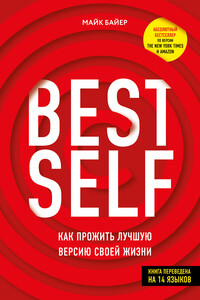Как читать, запоминать и никогда не забывать | страница 53
.
Kak, A. V. (1981). “Relationships between readability of printed and CRT-displayed text”, Proceedings of Human Factors Society – 25th Annual Meeting (pp. 137–140).
Konkle, T., Brady, T. F., Alvarez, G. A. & Olivia, A. (2010). “Scene memory is more detailed than you think: the role of categories in visual long-term memory”, Psychol Sci.
Kluten, M. (2014).Train je brein nu.
Mangen, A., Walgermo, B. R. & Brønnick K. (2013). “Reading linear texts on paper versus computer screen: Effects on reading comprehension”, International Journal of Educational Research, 58 (pp. 61–68).
Mann, S. & Cadman, R. (2013). “Being bored at work can make us more creative”, ScienceDaily, 9 January 2013.
Oppezzo, M. & Schwartz, D. L. (2014). “Give Your Ideas Some Legs: The Positive Effect of Walking on Creative Thinking”, Journal of Experimental Psychology: Learning, Memory, and Cognition, Vol. 40, No. 4 (pp. 1142–1152).
Pencavel, J. (2014). “The Productivity of Working Hours”, Institute for the Study of Labor.
Pol. M. (2009). Nog Slimmer. VU University Press.
Rawson, K. A. & Kintsch, W. (2005). “Rereading Effects Depend on Time of Test”, Journal of Educational Psychology, 97 (pp. 70–80).
Revlin, R. (2012). Cognition: Theory and Practice. Worth Publishers.
Rock, D. (2009). Your Brain at Work: Strategies for Overcoming Distraction, Regaining Focus, and Working Smarter All Day Long, Harper Business.
Sparrow, B., Liu, J., Wegner, D. M. (2011). “Google Effects on Memory: Cognitive Consequences of Having Information at Our Fingertips”, Science, vol. 333, no. 6043 (pp. 776–778).
Tigchelaar, M. S. (2015). Haal meer uit je hersenen. Bert Bakker.
Vohs, K. D., Redden, J. P. & Rahinel, R. (2013). “Physical Order Produces Healthy Choices, Generosity, and Conventionality, Whereas Disorder Produces Creativity”, Psychological Science, 24(9) (pp. 1860–1867).
Wäslund, E., Reinikka, H., Norlander, T. & Archer, T. (2005). “Effects of VDT and paper presentation on consumption and production of information: Psychological and physiological factors”, Computers in Human Behavior, 21 (pp. 377–394).
Wieth, M. B. & Zacks, R. T. (2011). “Time of day effects on problem solving: When the non-optimal is optimal”, Thinking & Reasoning, 17 (pp. 387–401).
Wong, L. (2014). Essential Study Skills. Cengage Learning.
Интернет-ресурсы
http://www.indiana.edu/~pcl/rgoldsto/courses/dunloskyimprovinglearning.pdf
http://www.theverge.com/2014/2/14/5411934/youre-not-going-to-read-this



